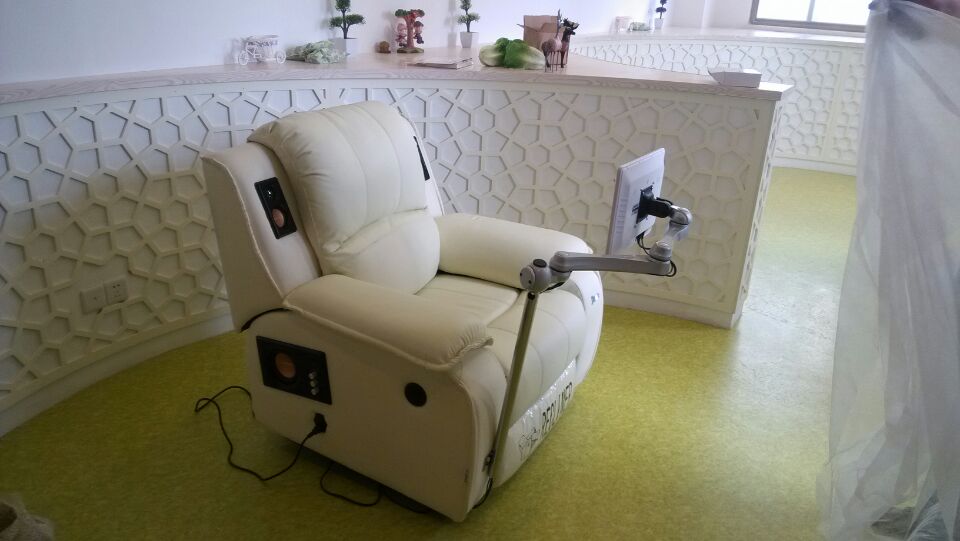Industry information
What is body music
There are many ways to treat the disease, but have you heard about somatosensory music therapy? The new method, which allows people to "recover from enjoyment and get treatment from relaxation", was recently launched in the treatment and prevention center of Foshan Hospital of traditional Chinese medicine. The reporter interviewed this and opened the mystery of somatosensory music therapy for everyone.

What is somatosensory music therapy?
According to Liu Jihong, chief physician of the center for prevention and treatment of diseases in Foshan Hospital of traditional Chinese medicine, somatosensory music therapy (i.e. music acoustic therapy, acoustic vibration therapy) (referred to as VAT) is a patented acoustic therapy technology. It can produce the same frequency resonance between the "external vibration" of music and the "internal vibration" of human body by amplifying the low-frequency signal of 16-150hz in music, and the physical transducer, i.e. the music vibrator, through the conduction mode of hearing, especially touch vibration kinesthetic sense, so as to relax and physiotherapy the human production quickly and deeply (such as the adjustment of the autonomic function and the improvement of microcirculation It has good biological effect.
According to the clinical data at home and abroad, the fast and deep relaxation and physical therapy brought by somatosensory music therapy can also be used to relieve nervous muscle tension, spasm, pain and movement disorders, improve sleep and brain emotion, cognition, hearing, speech and other functions, which is a safe and effective natural acoustic therapy means, and make people "enjoy it." Recover and be treated in relaxation.
What disease can body sense music cure?
It is reported that somatosensory music therapy is generally not for a specific disease, but for systemic functional adjustment. Specifically, the following outpatient clinics are suitable for the treatment of the disease: health care, physical and mental recovery; psychological department.
Department of sleep disorders: insomnia, anxiety, depression and various somatization symptoms; Department of rehabilitation: Children's cerebral palsy, stroke and vegetative wake-up rehabilitation, hypertension, migraine, Parkinson's disease, Alzheimer's disease, osteoporosis, diabetic foot, etc.; Department of Obstetrics and gynecology: perinatal care, postnatal rehabilitation, etc.; Department of Pediatrics, neonatology: neonatal feeding, premature, caesarean section, autistic And so on.
It can play the above-mentioned role because somatosensory music therapy can activate the paleocortex and the old cortex, promote the regeneration of brain tissue, improve the microcirculation of limbs, and also has the advantages of no drug side effects, no pain (patients feel comfortable and happy), low nursing labor intensity, daily repetition and so on.
But Liu also stressed that not all sub-health people are suitable for the treatment. "Some contraindications such as congenital heart disease, severe heart disease, placement of pacemaker or stent, internal bleeding, etc. can not be used, and pregnant women should be cautious.".
Sense music ≠ regular music
According to reports, conventional music therapy is an auditory response caused by air conduction, with few and slow physical and biological effects, no improvement of local microcirculation, and the course of treatment is long in effect, not obvious in a short period of time; while somatosensory music therapy has not only auditory response, but also the "same frequency resonance" effect caused by bone conduction and touch vibration, with many biological effects and rapid effect, The course of treatment is short. Generally, it can be effective within 1-2 weeks.
Liu stressed that the music used in the treatment of somatosensory music also has certain stress. In addition to the characteristics of general healthy music, such as beautiful melody, soft timbre, clear layers, and similar rhythm of music and human body (such as normal heartbeat), there should also be some specific requirements in audio, such as: wide range, large amplitude, good waveform envelope structure (harmonic component), etc.


